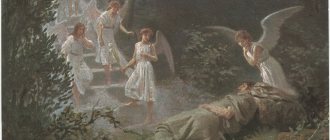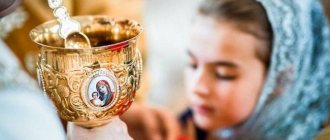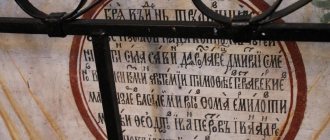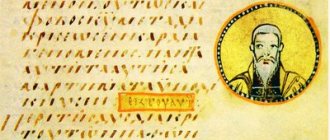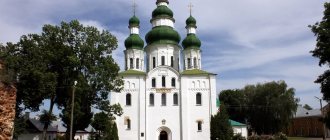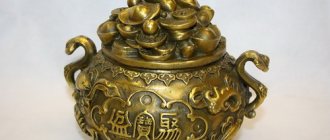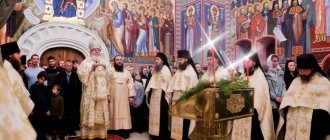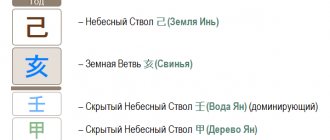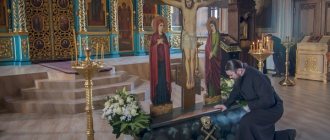Preface
Mikhail Bulgakov took from this world the secret of the creative concept of his last and, probably, main work [1] “The Master and Margarita”.
The author’s worldview turned out to be very eclectic: when writing the novel, Judaic teachings, Gnosticism, Theosophy, and Masonic motifs were used[2]. “Bulgakov’s understanding of the world, at best, is based on the Catholic teaching about the imperfection of the primordial nature of man, which requires active external influence for its correction”[3]. It follows from this that the novel allows for a lot of interpretations in the Christian, atheistic, and occult traditions, the choice of which largely depends on the point of view of the researcher...
“Bulgakov’s novel is not dedicated at all to Yeshua, and not even primarily to the Master himself with his Margarita, but to Satan. Woland is the undoubted protagonist of the work, his image is a kind of energy node of the entire complex compositional structure of the novel”[4].
The very name “The Master and Margarita” “obscures the true meaning of the work: the reader’s attention is focused on the two characters of the novel as the main ones, while in the meaning of the events they are only the protagonist’s henchmen. The content of the novel is not the story of the Master, not his literary misadventures, not even his relationship with Margarita (all this is secondary), but the story of one of Satan’s visits to earth: with the beginning of it the novel begins, and with its end it ends. The master is introduced to the reader only in the thirteenth chapter, Margarita even later - as Woland’s need for them arises”[5].
“The anti-Christian orientation of the novel leaves no doubt... It is not without reason that Bulgakov so carefully disguised the true content, the deep meaning of his novel, entertaining the reader’s attention with side details. But the dark mysticism of a work, despite the will and consciousness, penetrates into the human soul - and who will undertake to calculate the possible destruction that can be caused in it?..”[6]
The above description of the novel by the teacher of the Moscow Theological Academy, candidate of philological sciences Mikhail Mikhailovich Dunaev indicates a serious problem that arises before Orthodox parents and teachers due to the fact that the novel “The Master and Margarita” is included in the literature program of state secondary educational institutions. How to protect students who are religiously indifferent, and therefore defenseless against occult influences, from the influence of the satanic mysticism with which the novel is saturated?
One of the main holidays of the Orthodox Church is the Transfiguration of the Lord. Like the Lord Jesus Christ, who was transfigured before His disciples (Matthew 17:1–9, Mark 9:1–9), the souls of Christians are now being transformed through life in Christ. This transformation can be extended to the world around us—Mikhail Bulgakov’s novel is no exception.
Below we offer an experience in interpreting some episodes of this work, giving teachers of secular educational institutions the opportunity to get to know themselves and share with their students elements of the Orthodox worldview, taking the novel “The Master and Margarita” as a basis. This goal determines a certain one-sidedness and tendentiousness in the approach to the novel, which, however, is inevitable when trying to consider any significant work of art...
Chapters on Pontius Pilate, Satan and Christ
Photo: Flickr.com
Those who are not familiar with the Holy Scripture and its history may take what is written about in “The Master and Margarita” as historical facts, but we should not forget that the author wrote the novel under the influence of narcotic intoxication and the manuscript was never completed during his lifetime. Bulgakov used a prohibited substance as a painkiller after being vaccinated against diphtheria; over time, he ruined his health - at the end of his life, the writer lost his speech. Elena Sergeevna, his last wife, came up with the ending for him. Therefore, the chapters about Satan, Pilate, Christ do not even correspond to historical reality, although they encourage atheists to think a little about what is higher than them.
Of course, for those who are not strong in faith, the chapters about Pilate can cause confusion in their feelings and faith, which is why priests do not recommend reading the novel to new converts. This can cause dark thoughts, distort the idea of good and evil, and cause despondency and unhealthy thoughts in some people.
Portrait of an era
From biographical information it is known that Bulgakov himself perceived his novel as a kind of warning, as a super-literary text. Already dying, he asked his wife to bring the manuscript of the novel, pressed it to his chest and gave it with the words: “Let them know!”[7]
Accordingly, if our goal is not simply to receive aesthetic and emotional satisfaction from reading, but to understand the author’s idea, to understand why the person spent the last twelve years of his life, in fact, his entire life, we must treat this work not only from a literary point of view critics. To understand the author's idea, you need to know at least something about the author's life - often its episodes are reflected in his creations.
Mikhail Bulgakov (1891–1940) - grandson of an Orthodox priest, son of an Orthodox priest, professor, history teacher at the Kyiv Theological Academy, relative of the famous Orthodox theologian Fr. Sergius Bulgakov. This gives reason to assume that Mikhail Bulgakov was at least partially familiar with the Orthodox tradition of perceiving the world.
Now for many it is a wonder that there is some kind of Orthodox tradition of perceiving the world, but nevertheless it is so. The Orthodox worldview is actually very deep, it was formed over more than seven and a half thousand years and has absolutely nothing in common with the caricature drawn of it by essentially ignorant people in the very era in which the novel “The Master and Margarita.”
In the 1920s, Bulgakov became interested in studying Kabbalism and occult literature. In the novel “The Master and Margarita”, a good knowledge of this literature is indicated by the names of demons, the description of the Satanic black mass (in the novel it is called “Satan’s ball”), and so on...
Already at the end of 1912, Bulgakov (he was 21 years old at the time) quite definitely declared to his sister Nadezhda: “You’ll see, I’ll be a writer”[8]. And he became one. It must be borne in mind that Bulgakov is a Russian writer. What has Russian literature always been primarily concerned with? An exploration of the human soul. Any episode in the life of a literary character is described exactly as much as is necessary to understand the impact it had on the human soul.
Bulgakov took the Western popular form and filled it with Russian content, speaking in a popular form about the most serious things. But!..
For a religiously ignorant reader, the novel, in a favorable case, remains a bestseller, since it does not have the foundation that is necessary to perceive the completeness of the idea embedded in the novel. In the worst case, this very ignorance leads to the fact that the reader sees in “The Master and Margarita” and includes in his worldview such ideas of religious content that would hardly have occurred to Mikhail Bulgakov himself. In particular, in certain circles this book is valued as a “hymn to Satan.” The situation with the perception of the novel is similar to the importation of potatoes into Russia under Peter I: the product is wonderful, but because no one knew what to do with it and what part of it was edible, entire villages of people were poisoned and died.
In general, it must be said that the novel was written at a time when a kind of epidemic of “poisoning” on religious grounds was spreading in the USSR. The point is this: the 1920s and 30s in the Soviet Union were the years when Western anti-Christian books were published in huge editions, in which the authors either completely denied the historicity of Jesus Christ, or sought to present Him as a simple Jewish philosopher and nothing more. The recommendations of Mikhail Aleksandrovich Berlioz to Ivan Nikolaevich Ponyrev (Bezdomny) on the Patriarch's Ponds (275) [9] are a summary of such books. It is worth talking about the atheistic worldview in more detail in order to understand what Bulgakov is making fun of in his novel.
The Gospel of Satan or an appeal to the atheists of the 30s?
Photo: Flickr.com
To more accurately understand the banned novel by Mikhail Afanasyevich Bulgakov, it is important to remember the time of his work. Such works as “Heart of a Dog”, “The White Guard” and many others were created by the author as a criticism of the revolution, of the new time, when it was impossible to openly criticize atheism and power, since for this one could be shot or imprisoned.
It’s scary to imagine what kind of persecution the clergy and ordinary Christians were subjected to at that time. Bulgakov himself was the son of a priest, a professor at the Academy of Theology and a very educated man, however, the future writer, unable to withstand the onslaught of atheism, was forced to renounce his religious views, although, perhaps, this happened only outwardly. This happened at the age of 18, when he took off his cross.
The novel “The Master and Margarita” was written by the author as an appeal to the atheists of the 30s, to whom it was impossible to preach about God openly. Moreover, Mikhail Afanasyevich disguised it as a kind of fairy tale for the people of that time, in which good and evil practically changed places.
Woland appears as a charming, all-powerful hooligan, his actions go unpunished, and completely innocent people suffer from his actions. Margarita, in love, in order to find her chosen one, leaves her husband and becomes a witch, and Judas, according to the author, was killed by the disciples of Christ for betrayal, which contradicts the Gospel teaching.
The mixture of Kabbalism, history, philosophy, magic and reality makes you think about the relativity of atheism, although this novel cannot be called Christian, and Bulgakov himself confirms this in his letter - “I am writing a novel about the devil.” It is for this reason that evil remains unpunished, good is defeated, and the values themselves, including Christian ones, are presented in an extremely distorted form.
The attitude and opinion of the Orthodox Church about the novel “The Master and Margarita” by M. Bulgakov
The novel “The Master and Margarita” continues to excite the minds and hearts of readers today. He is praised and criticized at the same time. Orthodox believers have a particularly ambiguous attitude towards the work of Mikhail Bulgakov. What is the novel “The Master and Margarita” by Mikhail Bulgakov about? Of course, this work belongs to very talented works. And reading it can occur at different levels. There are many facets here that not everyone is able to see. The novel contains a parallel narrative about events that took place in the era of Pontius Pilate and in the writer’s time, that is, in Soviet times in the 30s. Despite its title, Bulgakov's work is not about the Master and his beloved Margarita. These two characters appear later and play a minor role. The main character is Woland, who came to Moscow on the eve of Easter. The novel uses an unusual juxtaposition. This is not a traditional contrast between the forces of light and darkness, but a comparison of old Satanism, in the person of Woland, and the Bolshevik infernal machine. Against the backdrop of the bloody events of the thirties, the tricks of the Prince of Darkness and his retinue look harmless and old-fashioned. Some, after reading the book, accused the writer of desecrating the Gospel, denying God and sympathizing with Satan. But is this really so? There are different opinions on this matter. Some critics are inclined to take the position that it is not Mikhail Afanasyevich’s novel itself that is blasphemous, but the life of Muscovites described in it, their atheistic views and radical materialism. In addition, in the novel Woland himself speaks about the reality of Christ. Consequently, the reader, after thoughtful reading, must ask himself who Christ was. Obviously, this is not Yeshua Ha-Nozri, described in the novel. The work encourages a person to look for other, more detailed information from other sources about Christ. In his novel, Bulgakov rather demonstrates the absurdity of the idea of atheism than promotes Satanism. As for the chapters about Pilate, the author himself admitted that this is a parody of the atheistic interpretation of the Gospel. In his story, the writer, through the image of the Master, wanted to show the torment of a man who voluntarily renounced God and was possessed by demonic forces. The master is just a puppet in the hands of Woland, through whom the devil writes his anti-gospel for the celebration of the black mass. For distorting the Holy Letter, the Master forever finds himself in the power of his dark patron. Margarita is an infantile woman who languishes from boredom and does not care too much about loyalty to her legal spouse. She sells her soul and becomes a witch for the opportunity to be with her lover. At the end of the novel, Woland and his entire retinue are sent to the underworld. Together with them, the Master and Margarita find peace in the kingdom of darkness. Without God and light. Orthodox view of the novel “The Master and Margarita” Theologians of the Orthodox Church were divided in their opinions about the novel “The Master and Margarita”. -So, some believe that this is a subtle apology for Satanism. People, reading Bulgakov's story, may think that an agreement with Satan is acceptable and there is nothing terrible about it. The whole danger is that in its frank, true form, evil repels and frightens a person. But if you “package” it in an impressive wrapper and add elegance, it will attract in an inexplicable way. And in Bulgakov’s novel, Woland and his servants are presented in precisely this role as charming scoundrels. -The opinion is also expressed that the writer, thanks to his talent, very skillfully creates a new version of Scripture, which has nothing in common with the true one. And he presents the devil as almost a champion of justice. -At the same time, Patriarch Kirill highly appreciated this artistic masterpiece. In his opinion, Mikhail Afanasyevich very skillfully showed in post-revolutionary times the godlessness of Soviet people. At that time, it was impossible to convey the entire fallen nature of people, their distorted attitude towards good and evil, other than through a metaphysical narrative. The Patriarch noted his critical attitude towards comments regarding Bulgakov’s apostasy from the Lord. And given his origins from a Christian family, this statement is completely questionable. Bulgakov wrote during the period of persecution of Christianity. It is unlikely that then it would have been possible to write about Christ. Such a novel might have reached us only now. The writer embarked on a risky experiment. At the same time, the clergyman did not add anything about compliance with Orthodox canons or give any assessment. Thus, there is no need to talk about the unanimity of the priests regarding the novel “The Master and Margarita”. “The Master and Margarita”: four different readings A feature of the works that were written in times of severe pressure from the authorities and the public is their encrypted nature. Therefore, each generation of readers finds in them what is relevant in a particular era. Bulgakov obviously wrote his novel for his contemporaries who lived in the 30s of the twentieth century. However, a completely different audience read the book for the first time. These are people living in the 60s. They saw in this story the touching love of the Master and Margarita, and interpreted the dialogues of Yeshua and Pilate as the relationship between the poet and the authorities. Ivan Bezdomny personified the thirst for knowledge. It was then that Woland was credited with aristocratic charm. In the 1980s, publications were accompanied by comments in the same spirit. Ten years later, the writer’s work began to be considered shocking and provocative. In theatrical productions, scenes with naked Margarita at the Satanic ball were played in full. At the beginning of the new 21st century, the novel received harsh criticism from some clergy. Nikolai Gavryushin and Mikhail Dunaev spoke harshly about the book. Bulgakov was called a fan of Satanism, and the novel was described as a black mass. But after the publication of the writer’s letters and drafts, this theory failed. Currently, contemporaries, including theologians, are trying to give a clear interpretation of the mysterious novel. Researchers are trying to understand whether “The Master and Margarita” is really an encrypted Christian message from Mikhail Afanasyevich to the people of that godless time. It should be noted that many readers who never thought about God, church and faith, after reading the novel, according to them, came to Orthodoxy. And this leads to certain conclusions.
Source
Death, death, death
However, no one was going to forget about the “curse” of the novel, and the curse itself would not be complete if it were not accompanied by mysterious deaths - as in the case of Tutankhamun. True, in the case of “The Master and Margarita” we are usually talking only about Bortko’s series: according to media reports, eighteen actors died in the few years after the premiere. Of course, not all of these actors played leading roles. But in 2007, Kirill Lavrov (he played Pontius Pilate), in 2008 - Alexander Abdulov (Korovyov), in 2010 - Vladislav Galkin (poet Ivan Bezdomny). And if Lavrov was 83 years old, then Abdulov was only 55, and Galkin was 39.
Article on the topic
“Illegal phenomenon.” The mysterious and inexplicable fate of Mikhail Bulgakov It seems that mysticism is evident, but the situation here is exactly the same as in the case of the tomb of Tutankhamun. A large expedition in which many workers worked (in the case of the series, a huge cast); some of them actually died in subsequent years - most often for reasons not connected with the pharaohs (or with The Master and Margarita). “The Curse of the Pharaohs” generally appeared as a response from the world press to the exclusive coverage of the epoch-making opening only by the London Times, the rights of which were transferred by Carnarvon and Carter. The urban legend turned out to be very beautiful and persistent, and also ideal for any situation in which there was at least a touch of mysticism. In 2021, one of the episodes of the detective series “Moscow Secrets” of the TVC channel (series “Curse of the Master”) was dedicated to the curse of Bulgakov’s novel. According to the plot of this film, investigators are investigating the death of the actor who played Woland during filming at the Patriarch's Ponds. Apparently, it’s more mysterious, more mysterious, and the “curse” is stronger.
